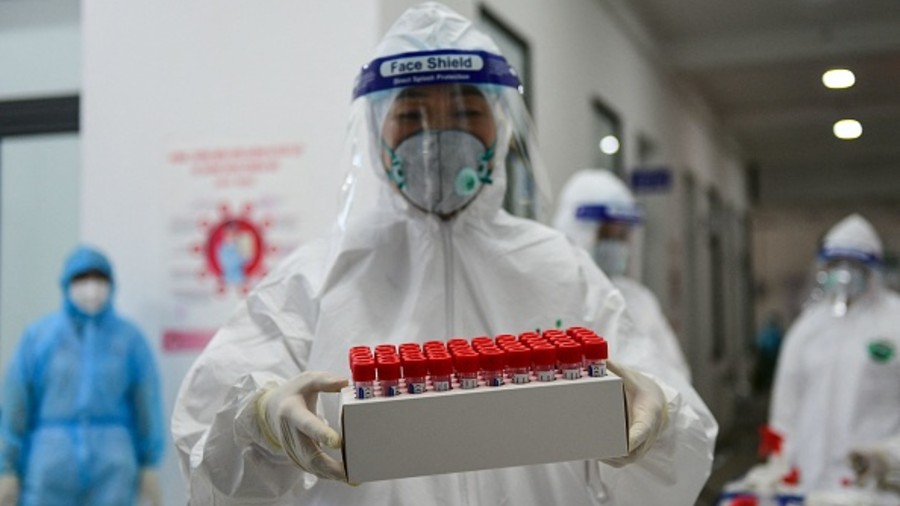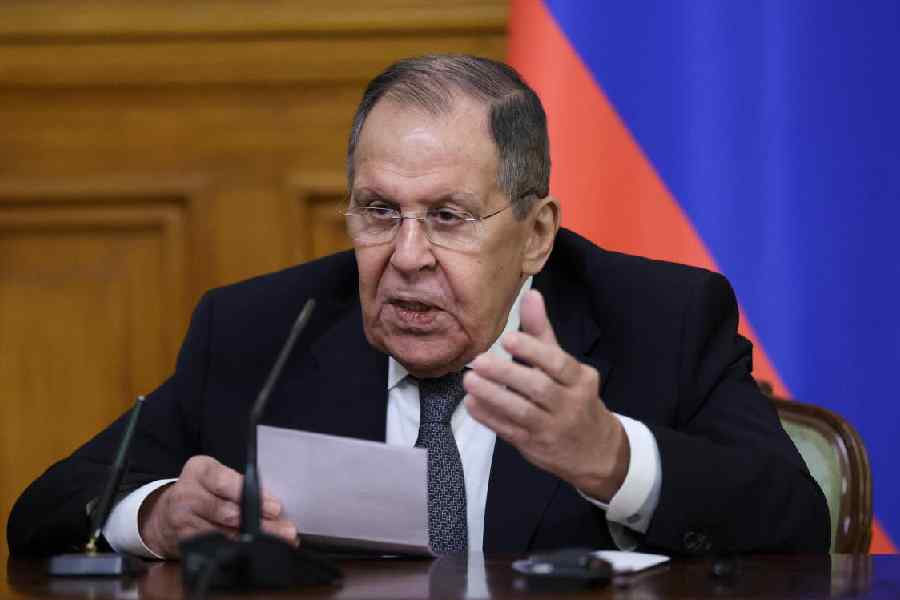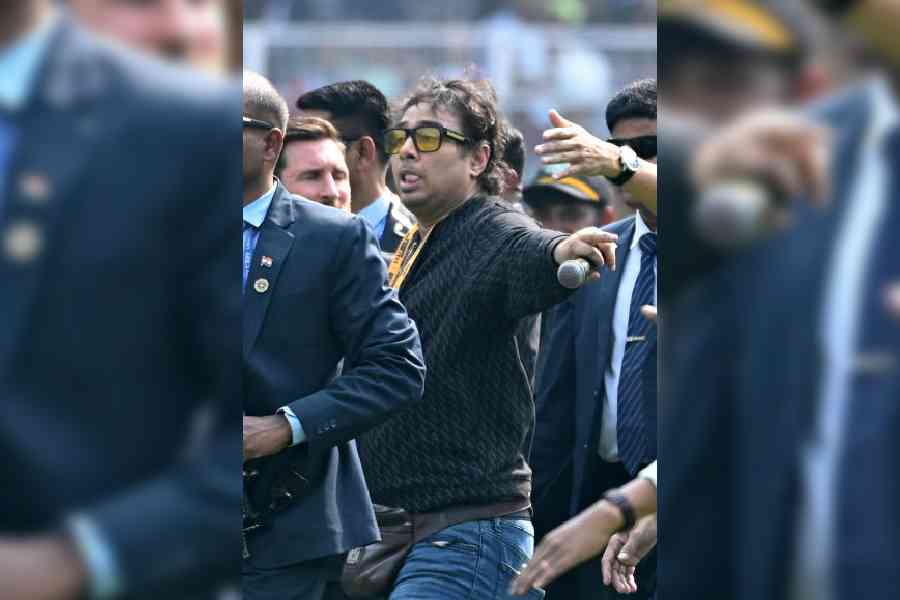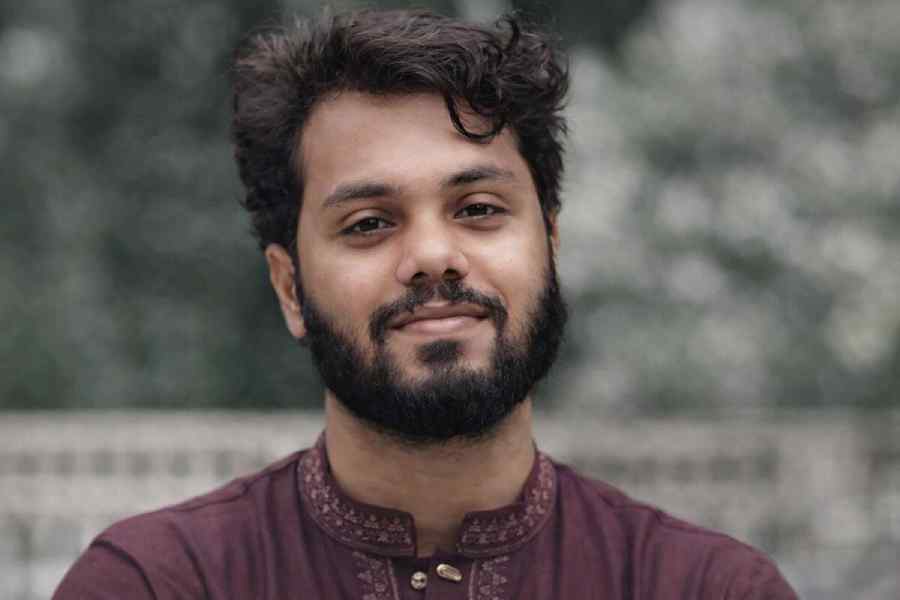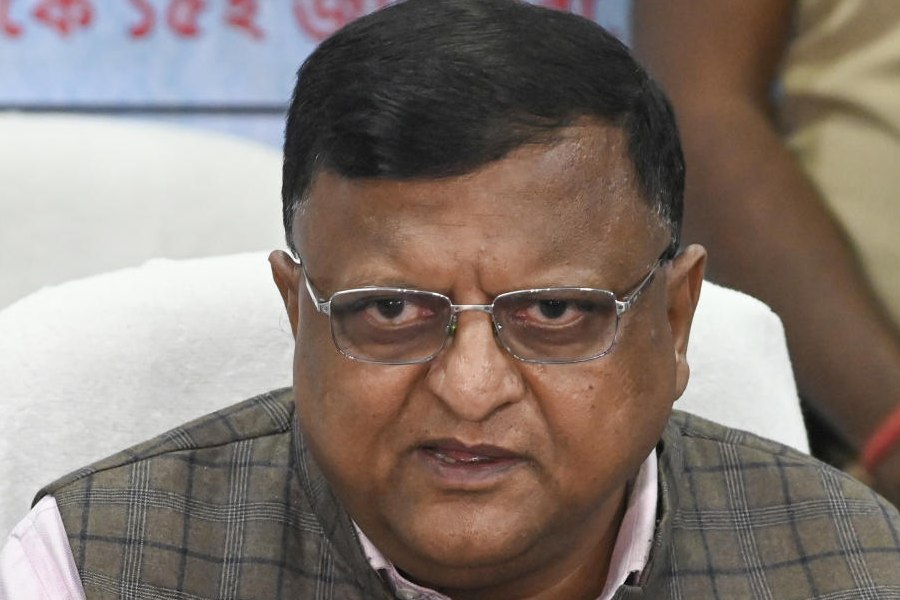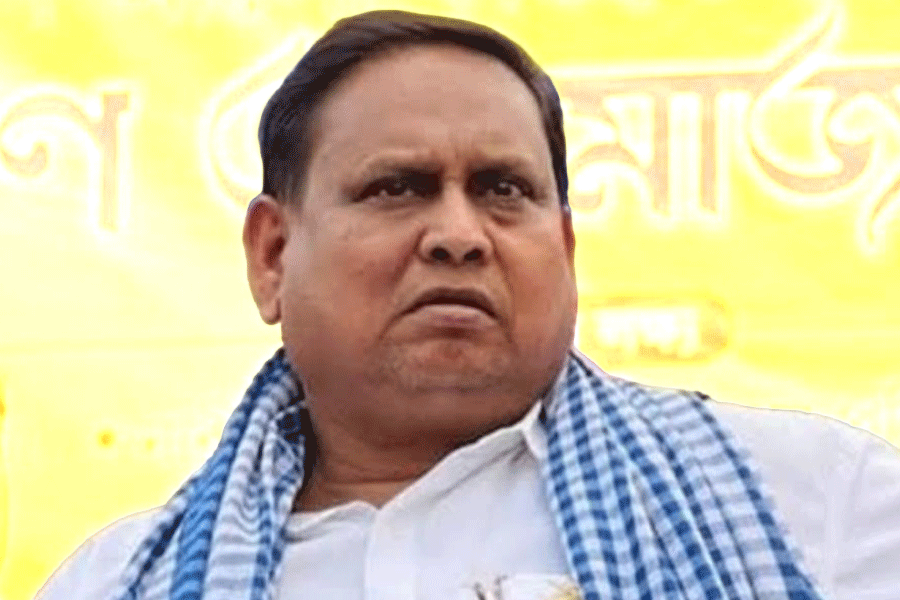Ram Singh Karki escaped the first wave of India’s pandemic by boarding a crowded bus and crossing the border home to Nepal. Months later, as the rate of new infections fell, he returned to his job at a printing press in New Delhi, which had sustained his family for two decades and helped pay the school fees of his three children.
Then India was swept by a second wave, and Karki wasn’t as lucky.
He was infected last month. Hospitals in New Delhi were overwhelmed. When his oxygen level dropped, his manager arranged for an ambulance to take him back to the border. He crossed into Nepal, carrying with him just the clothes on his back — and the virus.
Nepal is now considering declaring a health emergency as the virus rampages virtually unchecked across the impoverished nation of 30 million people. Carried by returning migrant workers and others, a vicious second wave has stretched the country’s medical system beyond its meagre limits.
Nepal has recorded half-a-million Covid cases and 6,000 deaths, numbers that experts believe deeply undercount the toll. Testing remains limited. One figure could indicate the true severity: For weeks now, about 40 per cent of the tests conducted have been positive.
A government in disarray has compounded the trouble. K.P. Sharma Oli, Nepal’s embattled Prime Minister, has been pushing for an election in November after the country’s Parliament was dissolved last week, an event that could worsen the spread.
Earlier this week, Hridyesh Tripathi, Nepal’s minister for health and population, said the government was considering declaring a health emergency as infections rise.
But such a declaration could be caught up in politics. The move would allow officials to limit people’s movements — a level of control that Opposition groups worry could be used to quell dissent.
In the meantime, officials in Kathmandu, the capital, have urged people to store food for at least a week and stay home.
The impact is rippling beyond those infected. Remittances from migrant workers have slowed. Tourism and the economy have been damaged.
“Millions of people continue to feel the increasing pressure not just with the direct health impact of Covid-19, but also with food, jobs, medical bills, kids out of school, payback loans, mental pressure and much more,” said Ayshanie Medagangoda Labe, the resident representative of the United Nations Development Programme in Nepal.
Nepal’s close relationship with India helped make it vulnerable. India has long been its most important trade and transit partner. The two nations share a deep cultural bond across a porous 1,100-mile border. Nepal’s devastation mirrors that of its big neighbour — from patients spilling out into hospital corridors and onto lawns, to long lines at oxygen refilling facilities, to a government unprepared for crisis.
Officials say labourers such as Karki who were forced to come home by the second wave brought the virus with them. Villages along the border are some of the worst hit. Nepal’s health ministry said about 97 per cent of the cases sent for genome sequencing show the B.1.617.2 variant found in India, which the World Health Organization has classified as a “variant of global concern.”
Nepal’s leaders were unprepared. During India’s first wave last year, when about one million Nepali migrant workers returned home, Nepal instituted testing and quarantine measures at border crossings.
But during this spring’s second wave, those measures were too little too late. By the time Nepal shut two thirds of its border crossings in early May, hundreds of thousands of labourers had made it back, trickling into their villages without proper testing or quarantine. Thousands continue to return daily.
The government’s attention had shifted elsewhere. In February, when the virus seemed to be in retreat, Oli held rallies of thousands of supporters in Kathmandu and other cities. Opposition parties held their own rallies. Last year, Oli had said the health of the Nepali people would deter the disease.
The government’s defenders say the pandemic is a global problem and that officials are doing the best they can with few resources or vaccines.
Oli has called for international aid, though it won’t be enough to meet Nepal’s needs. China has donated 800,000 vaccine doses, 20,000 oxygen cylinders and 100 ventilators. The US and Spain have sent planeloads of medical equipment, including oxygen concentrators, antigen tests, masks and surgical gloves. The US provided $15 million this month to scale up Nepal’s Covid testing. Nepali migrant workers in Gulf nations have arranged for oxygen cylinders to be sent home.
But Nepal can’t fight the pandemic without help from India. Already, an Indian vaccine manufacturer has told Nepal it can’t deliver a promised one million doses.
Nepal is also dependent on India for half of its medical equipment needs, according to the Chemical and Medical Suppliers Association of Nepal, but the latter country is keeping just about everything for its own urgent domestic needs. Equipment from China, already costly, has become more difficult to obtain because of Chinese pandemic restrictions.
“For a month now, India has stopped the supply of medical equipment and medicine also, not just vaccines,” said Suresh Ghimirey, the association’s president.
In some provinces that experienced the return of many migrant labourers in India, hospitals have run out of beds. In Surkhet district, the main provincial hospital said that it couldn’t admit more patients. Small outlying villages are quietly mourning their dead. Testing has been slow.
“Except a few villagers, many are unable to come out and do daily agricultural work,” said Jhupa Ram Lamsal, ward chief of the village of Gauri, where nine people died of Covid over 10 days earlier this month. “The worrying thing is that even symptomatic people aren’t ready for Covid tests.”
Lamsal said he had recently reached Gauri, which is remote and lacks health facilities, along with a team of doctors to conduct antigen tests. Locals turned down health professionals’ plea for Covid tests, he said, arguing they would be dispirited if they found out they were positive.
“The situation is out of control,” Lamsal said. “We are hopeless, helpless.”
Kakri, the printing press worker, hailed from a village in the Bhimdatta Municipality, in Nepal’s western corner. The area of 110,000 people has officially recorded 3,600 infections, according to the health chief there, Narendra Joshi. But lack of measures at the border means that the data may not fully measure the severity.
“More than 38,000 people have returned from one of the two border points in the district since the second wave started in India,” said Joshi, “It’s hard to manage them.”
Karki was a high school dropout who went to India to work as a labourer when he was still a teenager, his wife, Harena Devi Karki, said. On his visits home twice a year, he was the life of gatherings — cracking jokes, making fun. The Rs 25,300 a month he sent home covered his family’s household costs as well as the private school fees of their two teenage daughters and a 12-year old son.
Even when the lockdown last year meant Karki was stuck at home for months with no earnings, he insisted the children continue with private school. He would repay the debts once the printing press opened again. He dreamed of seeing his eldest daughter — “she’s the most talented” — grow up to be a doctor.
“I couldn’t complete my studies,” Karki remembers her husband saying. “Let me eat less, but we should send them to a better school for their education.”
When Karki received her husband at the border around 2.30am on April 29, she said, he was frail and lacked the energy to even stand up. He was taken to a nearby hospital, where he died.
“‘Everything is ok. Go home,’” her husband told her, she said. “But he never came home.”
New York Times News Service


